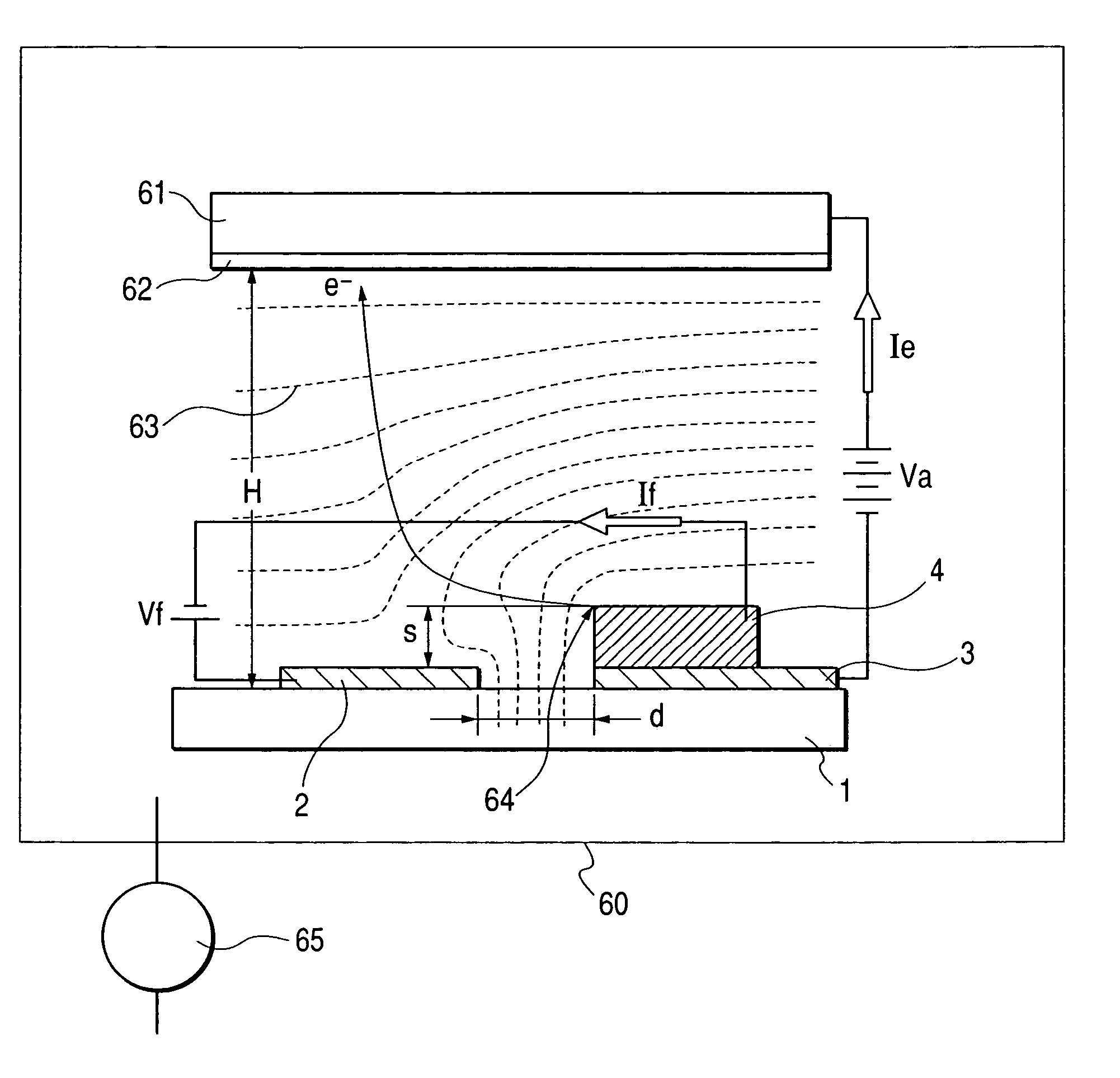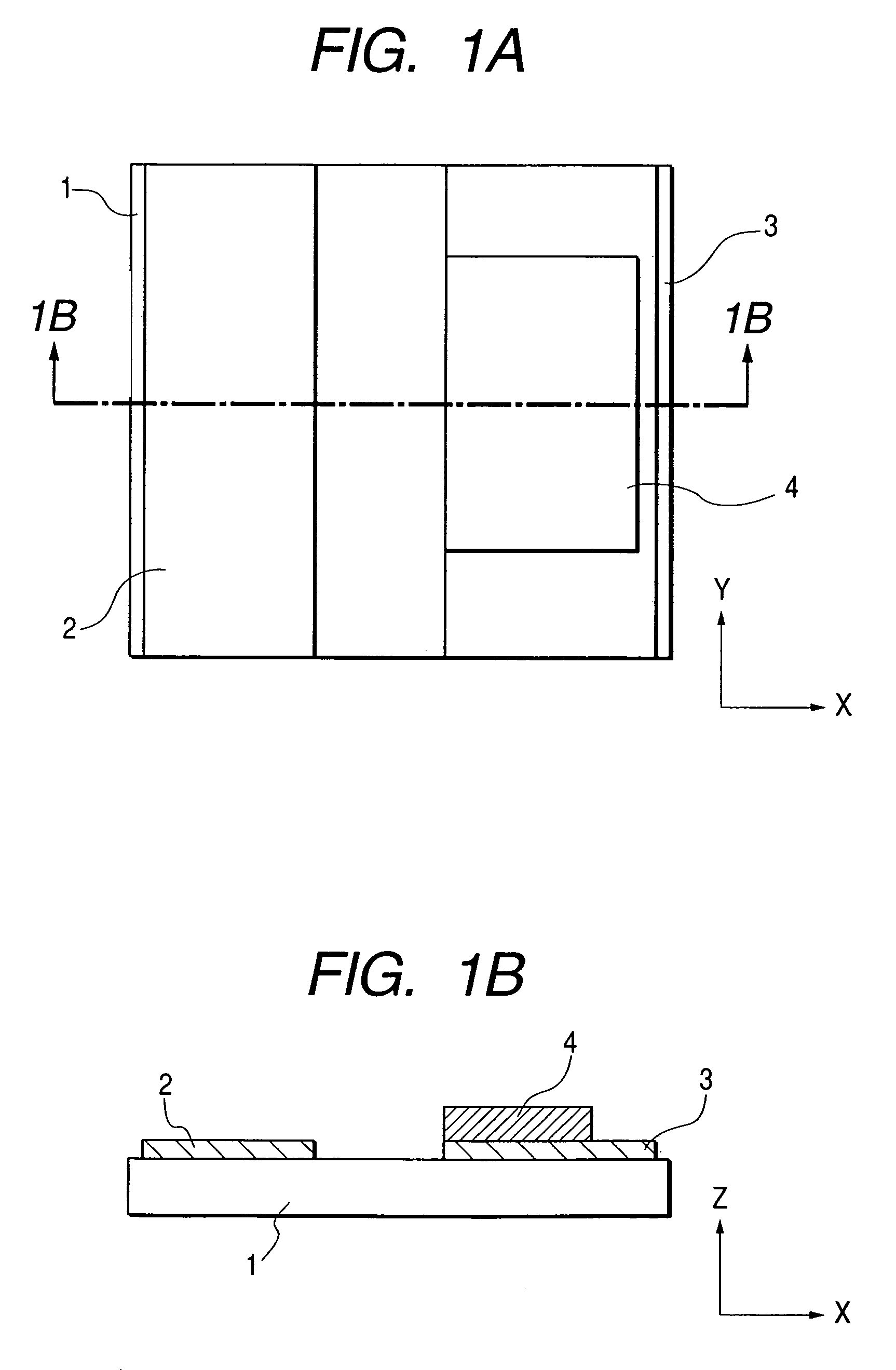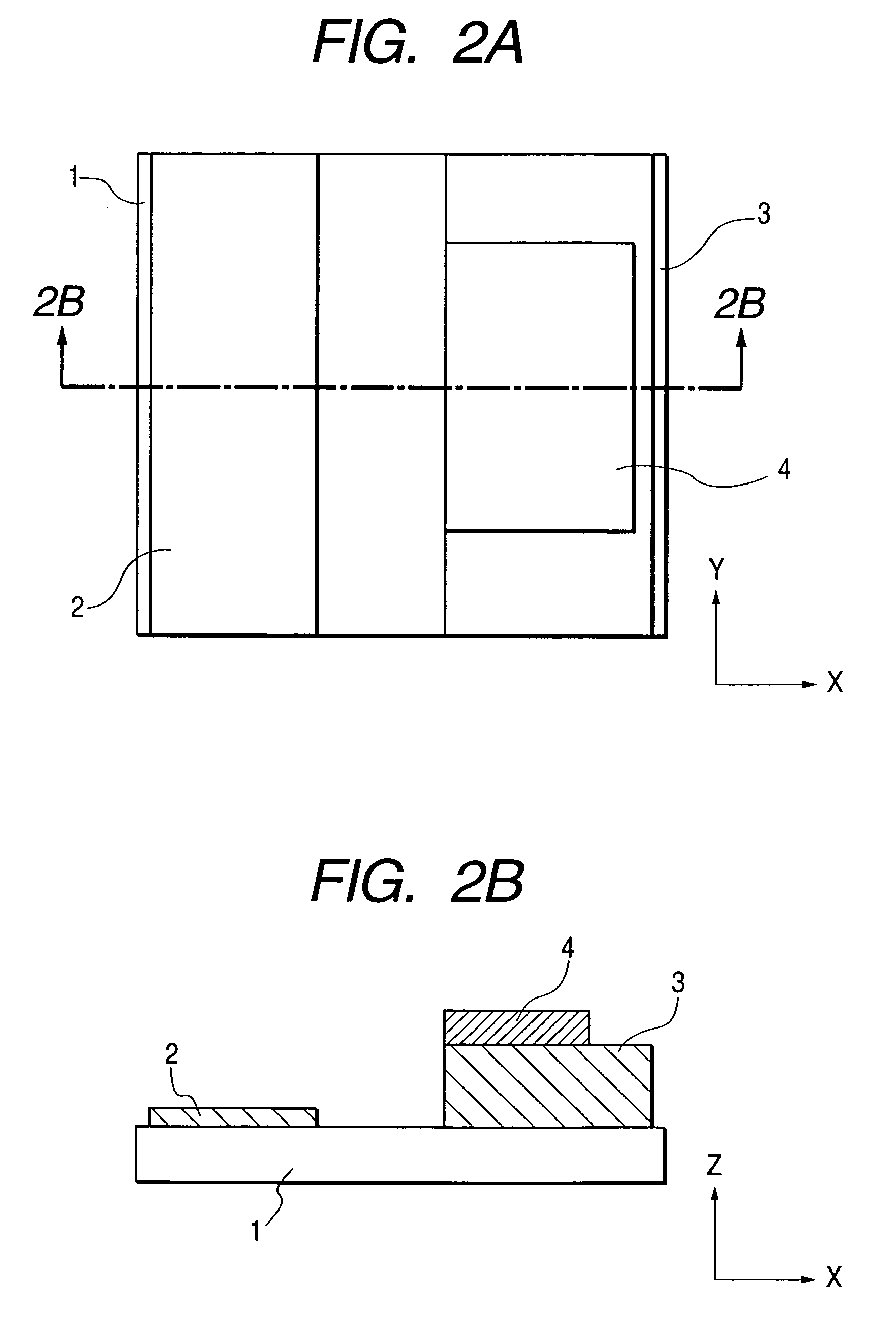Electron-emitting device, electron-emitting apparatus, image display apparatus, and light-emitting apparatus
a technology of electron-emitting devices and electron-emitting devices, which is applied in the manufacture of electrode systems, electric discharge tubes/lamps, and screens with screens, etc., can solve the problems of increasing the power consumption of driving due to the device capacitance of electron-emitting devices, increasing the requirement for higher resolution of image display apparatuses, and high voltage. , to achieve the effect of high-luminance emission/display, low vacuum degree, and increased ra
- Summary
- Abstract
- Description
- Claims
- Application Information
AI Technical Summary
Benefits of technology
Problems solved by technology
Method used
Image
Examples
embodiment 1
(Embodiment 1)
[0128]FIG. 1A shows a top view of an electron-emitting device fabricated in this embodiment. FIG. 1B is a cross-sectional view taken along the line 1B—1B of FIG. 1A.
[0129]FIGS. 1A and 1B illustrate an insulating substrate 1, an extraction electrode 2 (gate), a cathode 3, and an emitter material 4.
[0130]The process of fabricating the electron-emitting device of this embodiment will be described in detail.
(Step 1)
[0131]A quartz substrate was used as substrate 1. After sufficiently cleansing the substrate, a 5 nm thick Ti film (not shown) and a 30 nm thick poly-Si film (arsenic doped) were successively deposited by sputtering on the substrate as gate electrode 2 and cathode 3.
[0132]Next, a resist pattern was formed by photolithography using a positive photoresist (AZ1500 / from Clariant Corporation).
[0133]Thereafter, dry etching was performed on the poly-Si (arsenic doped) layer and Ti layer with the patterned photoresist used as a mask, CF4 gas being used to etch the Ti l...
embodiment 2
(Embodiment 2)
[0147]FIG. 2 shows a second embodiment of the present invention.
[0148]In this embodiment, an electron-emitting device was fabricated in the same manner as that in the first embodiment except that the cathode 3 corresponding to that in the first embodiment had a thickness of 500 nm and fibrous carbon provided as electron-emitting material 4 had a thickness of 100 nm. Currents If and Ie in the fabricated electron-emitting device were measured.
[0149]In this device arrangement, the electron emission point was positively heightened (toward the anode) relative to the gate electrode by increasing the thickness of the cathode 3. Trajectories along which electrons impinge on the gate were thereby reduced, thereby preventing a reduction in efficiency and occurrence of a beam-thickening phenomenon.
[0150]Also in this device arrangement, the electron emission current Ie at Vf=20V was about 1 μA. On the other hand, the If characteristic was similar to the Ie characteristic but the v...
embodiment 3
(Embodiment 3)
[0152]FIG. 3 shows a third embodiment of the present invention.
[0153]In this embodiment, in the step corresponding to step 2 in the first embodiment, palladium oxide 51 was provided on the cathode 3 and in the gap between the electrodes 2 and 3. Pd oxide was provided in the gap in such a manner as to extend from the cathode 3 to a point near the midpoint of the gap. Excepting step 2, this embodiment is the same as the first embodiment.
[0154]The electric field in the electron-emitting device of this embodiment was twice as strong as that in the first embodiment because the gap was reduced, thereby enabling the drive voltage to be reduced to about 8 V.
PUM
 Login to View More
Login to View More Abstract
Description
Claims
Application Information
 Login to View More
Login to View More - R&D
- Intellectual Property
- Life Sciences
- Materials
- Tech Scout
- Unparalleled Data Quality
- Higher Quality Content
- 60% Fewer Hallucinations
Browse by: Latest US Patents, China's latest patents, Technical Efficacy Thesaurus, Application Domain, Technology Topic, Popular Technical Reports.
© 2025 PatSnap. All rights reserved.Legal|Privacy policy|Modern Slavery Act Transparency Statement|Sitemap|About US| Contact US: help@patsnap.com



